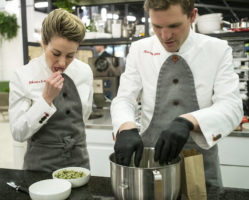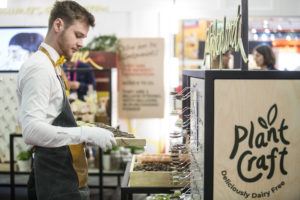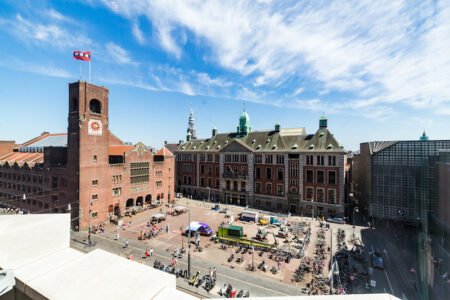Spotlight: Barry Callebaut releases global chocolate trends reports for 2021

Swiss-headquartered Barry Callebaut has revealed some of the key chocolate trends that it believes will be making their mark throughout 2021, as the world continues to grapple with challenging conditions, reports Neill Barston.
As the global chocolate business notes, research from Euromonitor has shown that chocolate confectionery proved to be more than $100 billion in international sales during 2020.
According to Euromonitor research group, which will be speaking at our World Confectionery Conference this June, the next five years will see a respectable growth of 4.4% annually, despite challenging wider economic conditions amid the pandemic.
The organisation also highlights that the three key markets remain the US, western Europe and Asia Pacific, which together account for two thirds of total market sales.
Despite the lack of an ISM event due to the coronavirus pandemic, Barry Callebaut has delivered some key moments with the past few years, including the continued category development of its Ruby chocolate (considered the fourth type of chocolate), as well as its wholefruit chocolate launched in the US in the autumn of 2019, followed by a dairy free M_lk Chocolate series, unveiled at the start of last year.
Consequently, Barry Callebaut has identified the top trends in chocolate for 2021 and beyond, using feedback from its network of chefs, chocolate & confectionery experts, and resources around the world for a range of regional insights.
Within western Europe, the zone has a total turnover of around €33 billion and forecasted growth of 2.8% CAGR between 2020-2025, with no less than 11,000 innovations launched in the segment last year alone.
Breaking its reports down into the three biggest regions, the company’s studies found some intriguing results indeed, with trends broken down into several core areas- ‘indulgent moments,’ ‘good for me,’ ‘chocolate I trust’ and ‘taking new forms’.
Indulgent treats
As far as the first category goes, indulgent product choices are where consumers are looking for comfort, to relax; alone or with loved ones. Think rich & creamy chocolates and multisensorial experiences. While iconic products have a big role to play here (as they are well-known by the consumers) you might want to consider offering a chocolate that is new and refreshing.

Consequently, according to Barry Callebaut’s research, 59% of European customers think chocolates with multiple textures and flavours are more premium, with seven in 10 agreeing that they prefer brands that allow them to indulge. Perhaps not unsurprisingly, comfort is the number one driver for shoppers who are seeking some reassurance in challenging times.of
Linked to this, a total of 66% of European consumers think upscale chocolates should come with a story about where it comes from and how it was made, with more than half of global centennials most enjoy spending their money on sweets and snacks ahead of other product choices. In addition, 43% of consumers say they look for any sense of occasion to celebrate.

Good for Me
Being mindful of their health and willing to maintain the right energy level throughout the day, consumers are looking for healthier alternatives, without compromise on taste.
One of the company’s key findings with regard to health was that 39% of European Millennials think that vegan or dairy free chocolates are better for them than the ones with dairy, with a total of 63% seeking out organic options, with a similar total (55% preferring sugar reduced options).
Chocolate I trust
Consumers want to make sure they can indulge with chocolate without harming the planet & its people. They also value local craftsmanship as they trust it more and because it allows to lower the carbon print impact. This is reflected in a strong desire for transparency – 61% of people what to know more about where their chocolate comes from. Barry Callebaut’s continued focus in this area (including its Forever Chocolate programme) has led to partnerships with businesses such as Tony’s Chocolonely, which has its mission statement of seeking to provide 100% slave free chocolate – in reference to the fact recent studies from NORC at the University of Chicago found that there were still 1.56 million children still exposed to hazardous forms of labour in key markets of Ghana and Ivory Coast.
Taking New Forms
As Barry Callebaut explains, chocolate categories are continuing to mutate, with gifting providing to be one of the notable forms of driving innovation, as well as the business also continuing its own product development. As examples, the company notes its wider ingredients work within the inclusions market, as well as continuing to work with a number of brands around the world in bringing its chocolate to market.
US MARKET
As Barry Callebaut notes, America remains the second largest market for chocolate in the world, amounting to $23 billion in annual sales, and home to major brands including Hershey, Mars, Mondelez and Ferrara. According to Euromonitor, it is forecast to grow in value (3.5% CAGR) and volume (1.1% CAGR) in the next 5 years from 2020 to 2025.
Since COVID-19, comfort food has become more important to consumers. Confectionery can support emotional well-being now, and in the “next normal.”
Whether consumers are seeking comfort, finding moments to celebrate, or looking for ways to escape the ordinary, chocolate has a role to play in those occasions. Interestingly, 45% of consumers believe that products from the past taste better than present ranges, with 47% stating that those items with multiple flavours and textures are likely to be more premium in nature. Consequently, studies showed that 72% of people believed treats are an important part of their lives and emotional wellbeing.

A total of 55% of Americans believe that rare and unique flavours make chocolate more exciting, and that 70% of people are driven in their purchase choices by the percentage of cacao in chocolate – they are open to new and indulgent offerings. Popular choices include pralines, marzipan, and confectionery fillings, chocolate decorations, ‘chocolate domes’ and fine brittle nut crunches.
Good For Me
According to its studies, plant based in the US, is making way for ‘milk-like’ chocolate, with a total of 492 new launches in snack bars and chocolate confectionery being with the claim of either vegan/no animal ingredients in 2017-2018, which rose to 607 in 2020 – representing a 20% increase.
Another key finding relates to 44% of purchasers say having a high level of protein is important, which is linked to the development of Keto diets, with Barry Callebaut responding to this with its own market offerings (including its Plant craft range), as well as notable developments from other brands.
Trusted chocolate
Cocoa is in the spotlight around the world from a sustainability perspective. More chocolate lovers want to make sure they can indulge in their favourite treat without harming the planet & its people. They also value provenance and craftsmanship of chocolate, because it communicates quality they can trust. As a result, six in 10 North American consumers agree that replacing regular chocolate with Belgian chocolate will make it more premium.
Furthermore, sustainable cocoa has become a major factor, with products featuring such claims experiencing 15% growth, that is mirrored by an expectation that by 2025, 70% of chocolate in the US will be sustainably sourced.

New forms
The US market enjoys a wide range of product launches across the segment, and the shift to at home occasions is reshaping and accelerating
change in consumer behaviour. Chocolate remains a top flavour in treating, so manufacturers and brands are taking cocoa
into new formats and categories to meet this new demand. As a result, chocolate categories continue to mutate and
borders blur, while snacking is going through a little revolution. This has seen 58% of American snack more amid the coronavirus pandemic.
ASIA
According to Euromonitor, the segment is forecast to increase in category value with volume growth (1.6% CAGR), and impressive value growth (4.1% CAGR) in the next 5 years from 2020 to 2025.
It is the #3 market for chocolate confectionery, after Europe and North America at over $15 billion in retail sales. As a less mature market,
exciting & progressive innovation has a big impact that can influence international flavor trends and spark inspiration for chocolate makers around the world.
Results for the Asian market delivered broadly similar patterns to the US, and Europe, though as with all other food markets, there are regional differences and tastes specific to local markets.
One of the big factors was that 69% of Asian customers want ingredients in chocolate that are good for you, with 74% being open to trying new product ranges. For more details on all of the reports visit www.barry-callebaut.com



